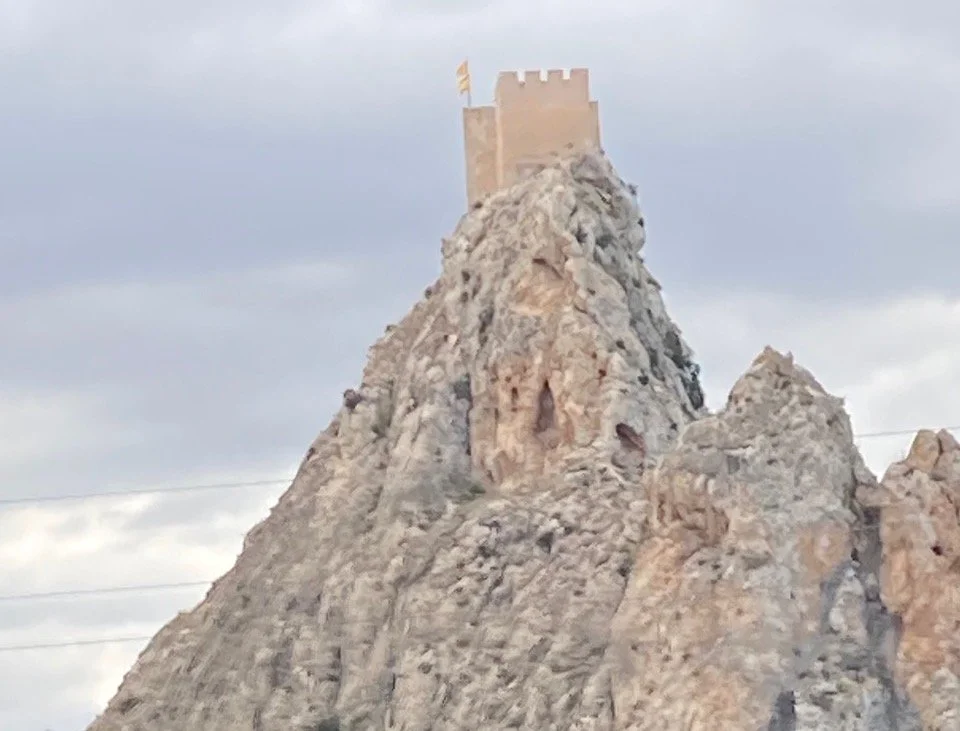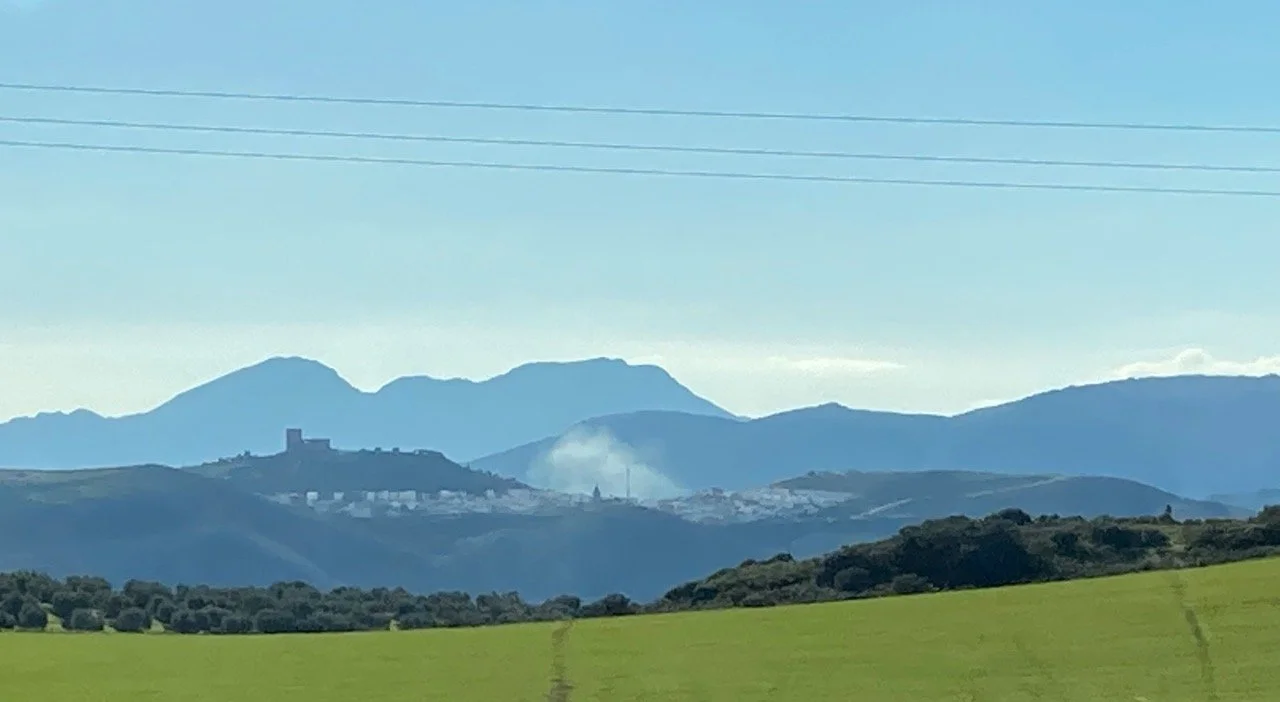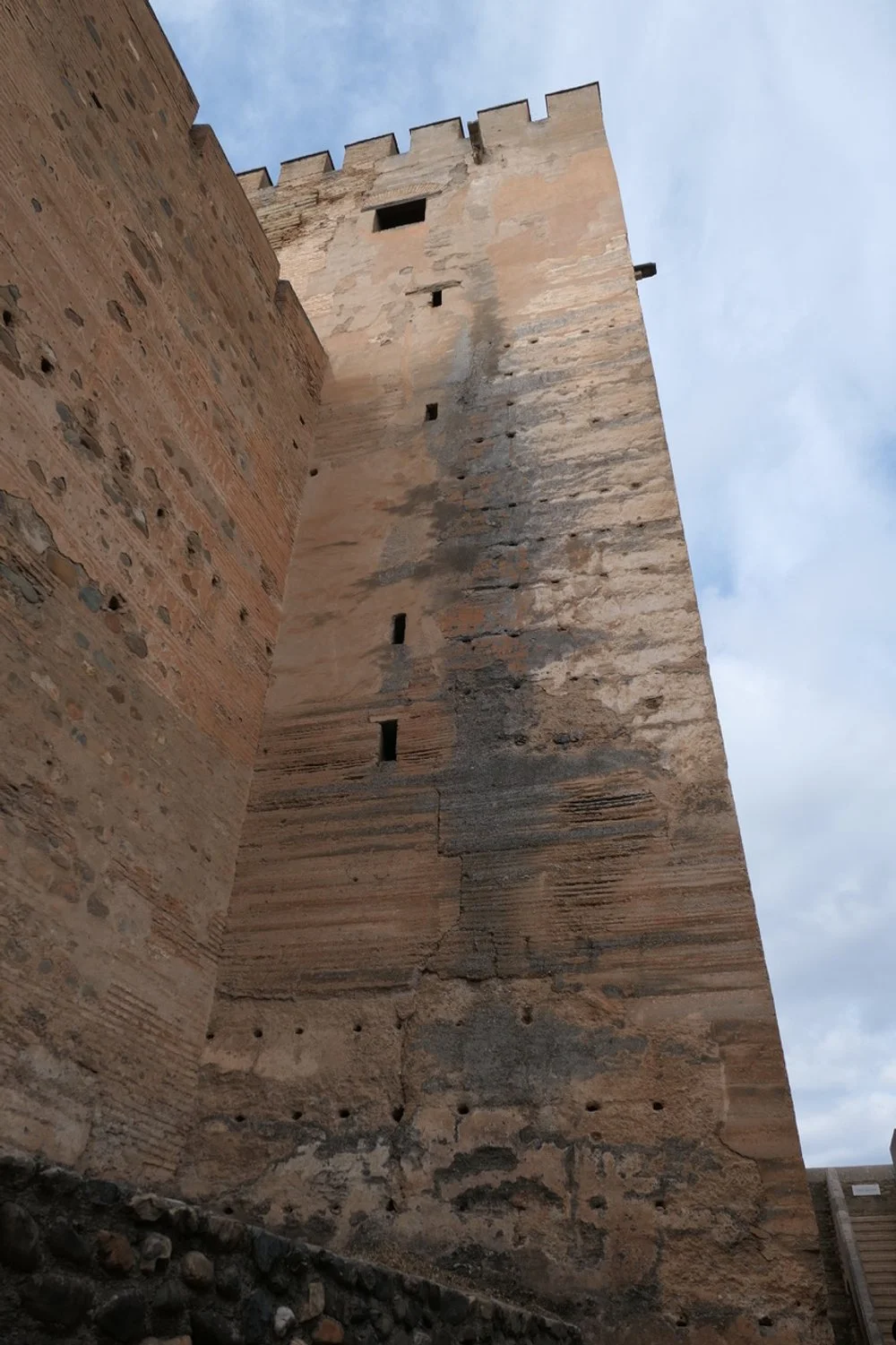Castles in the Sky
Photo of Castle Sax in Spain by J. Sharland Day
Most people are familiar with the song Castles in the Sky by Ian Van Dahl, about life and dreams, but what about real castles that reach up to the sky? Ever wonder why they were built so high above everything else? Or do you assume it’s because the king wanted to be far above his lowly kingdom to rule over it and make the minions remember his point of power and placement above all others?
That was likely true in part. But mainly castles were built on the highest hill possible because of security. Building a castle on a high hill made it harder for enemies to attack and it gave watchmen the ability to see those enemies coming from far away so that preparations could be made to defend themselves. No sneaking up on those castles, for sure. Aside from being able to track the enemies below, shooting arrows downward was easier and did more damage than when they were shot upward, which was also the reason for building higher walls.
Additionally, castles on high hills gave the queen a greater sense of safety for feeling more secure when the king and soldiers were off to battle. And being in a castle high above everything gave the queen a place to sit and watch for her man to return. Or watch for her lover while the king was gone so that she could meet him at the door and sneak him in. Whatever queens did, back in the day.
_______________________
I learned these things when we drove from Valencia to Grenada and then Seville after seeing several interesting castles set back away from villages and high up on the hills. Although we did see a few castles that were on the hill surrounded by a village, which reminded me of the black and white movie Young Frankenstein with Gene Wilder and its setting.
Photo near Seville, Spain by J. Sharland Day
I got quite a tingle seeing those medieval edifices. I wanted to research them, their history, and why they were built the way they were with high, thick walls, turrets, and narrow windows.
Windows, I found out, were narrow so that the bad guys couldn’t sneak in easily, besides helping to keep out the cold and/or the heat. And turrets were an offensive addition for soldiers to use when shooting arrows below. But I also wanted to know how they were built, since that would have been during times long before bulldozers, cranes, and Sawzalls. I could only imagine the labor-intensive work involved, as well as the number of laborers needed and the time it took, to build one of those behemoths.
I learned that stones were brought to the site with horse-drawn wagons, which, I imagined would have taken a while in order to have enough stones to finish the job. Stone masons would then chisel each stone into blocks.
After a block foundation was set up and walls got too high to roll or drop the blocks into place, man-powered cranes were used to lift the blocks, eventually needing scaffolding to aid in the process of going higher. In the meantime, other workers would fill in the cracks of set-in-place blocks with mortar by using soil, lime, and water.
Considering the fact that castles were anywhere from 15 to 40 feet high or 4.6 meters to 12 meters, and usually 8.2 to 19.7 feet or 2.5 to 6 meters thick, that meant a hell-of-a-lot of stones were chinked out and slathered together. It took an average of ten years to build a big castle, or as little as two to three years, depending on the size and the quantity and quality of adornments and accessories desired by the king. So, there could have been a lot of changes in the work staff throughout those years of hard work, and I doubt there was a retirement program in place back then.
Photo of Alhambra castle tower by J. Sharland Day
Castles were originally made of wood, I was interested to learn, because they were cheaper and easier to build, of course, but since they were also easier to breach and burn, kings decided to switch to stone for greater stability and defensibility.
_______________________
After renting a car and beginning our drive from Valencia toward Grenada to see the famous palace of Alhambra, we were thrilled to see many silhouettes of castles along the way that did, indeed, reach up to the sky.
Unfortunately, it was a cloudy, rainy day, so we didn’t venture closer to them, and photos weren’t so bueno, but the memories are still vivid.
At first, the castles were few and far between, but then we began to see more and more. Some were in ruins while others looked to still be in use for whatever reason. Maybe some were museums, while others were lived in. I’d noticed an article about the many castles that were for sale in Spain and had an insane moment of visualizing owning one.
That is until I began thinking about the work and time involved to make one livable. And then I reminded myself that we’d likely have to invest in a forest to keep the place heated during the colder seasons, which would need to be replenished every year to keep ourselves in constant wood-burning material. And what about maid service to keep the place clean?
It was with those thoughts and questions about owning a castle that I decided, nah. I’d just appreciate those historic structures from afar and feel grateful that I didn’t have to live the life they had lived while in those stone structures.


